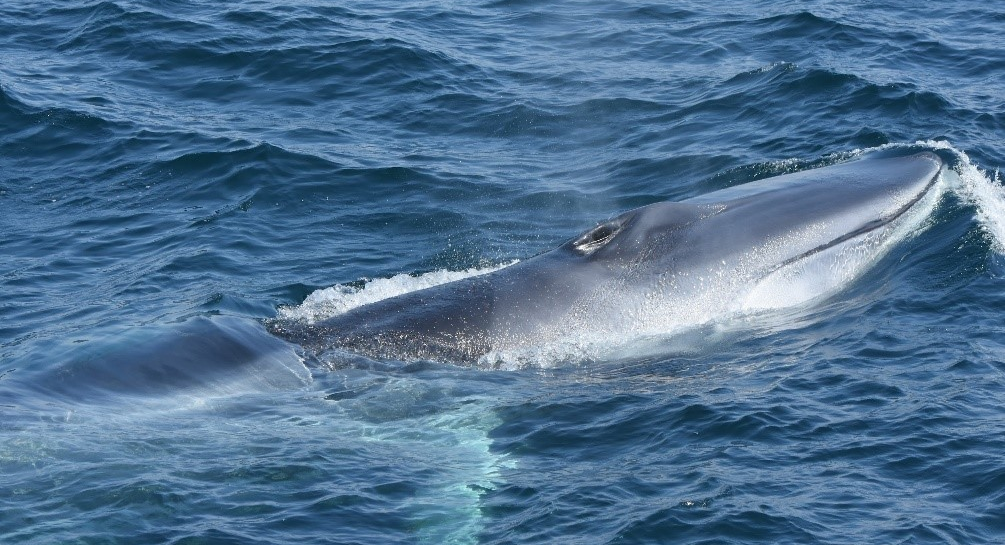The second-largest animal in the world has moved to the Big Apple.
The fin whale is more than 80 feet long and can weigh as much as 180,000 pounds, and gets its name from a distinctive fin on its back. The massive creatures, which are endangered due to past commercial whaling and boat collisions, were once considered a rare sight in the summer months.
But new research by scientists from the Wildlife Conservation Society and Woods Hole Oceanographic Institution has found the ocean giants live in New York City’s waters year-round.
“[With] the type of scientific information that we are producing, we can begin to help inform best practices to minimize the threat to these animals, especially now that we understand they’re here in every month of the year,” said Howard Rosenbaum, coauthor of the study and director of the nonprofit Wildlife Conservation Society’s Ocean Giants Program.
Researchers placed real-time recording devices on buoys around 20 miles from shore that collected more than 2,000 hours of whale songs from a variety of species, including fin whales. After sifting through 653 days of recordings, they concluded fin whales are most active in New York City’s waters during the fall.
Scientists also found variations in fin whale songs. They noticed shorter intervals between songs during the fall, a pattern that points to the possibility of breeding. Meanwhile, there were longer note intervals during the spring, which are consistent with foraging activities.
Like many New Yorkers, the whales are here for romance — and food. Fin whales feast on sand eels and small silvery fish called menhaden. The recovery of the area’s coastal wildlife is the result of aggressive environmental legislation, such as the Clean Water Act and the Marine Mammal Protection Act.
“You can start to see recovery,” Rosenbaum said.
The plentiful food supply for these mammoth sea creatures indicates that habitats are improving along the New York Bight, which stretches along the Atlantic Coast from Montauk to Cape May, New Jersey — an area slated for new wind farms.
“The important part of the work that we do is to generate important new information and understanding about these large, charismatic, iconic marine mammals that are off the coast of New York so that we can inform practices and policies and efforts to protect them in what’s one of the busiest waterways in the world,” said Rosenbaum.
Fin whales can swim within a mile of shore, and are also spotted 20 or 30 miles offshore. Keep an eye out for their dorsal fins above the water’s surface.
They’ve been seen off the Rockaways, along Brooklyn’s Atlantic Coast and off New Jersey. You can check out the Wildlife Conservation Society’s guide to whale watching here.

Leave a Reply